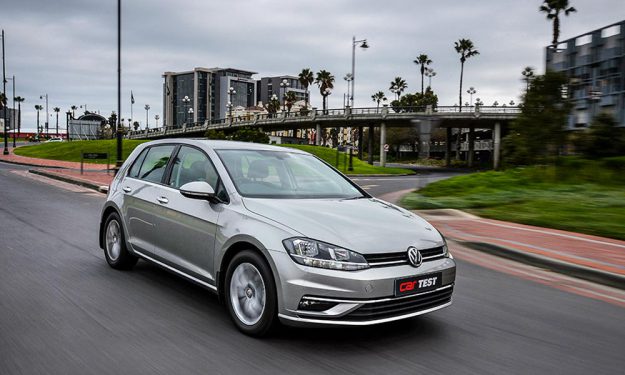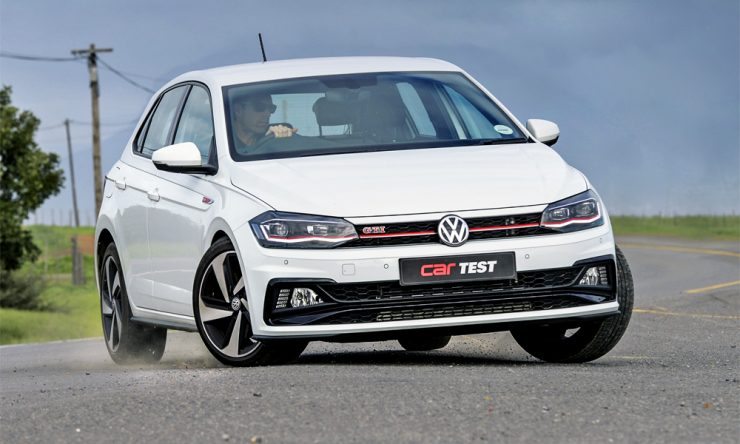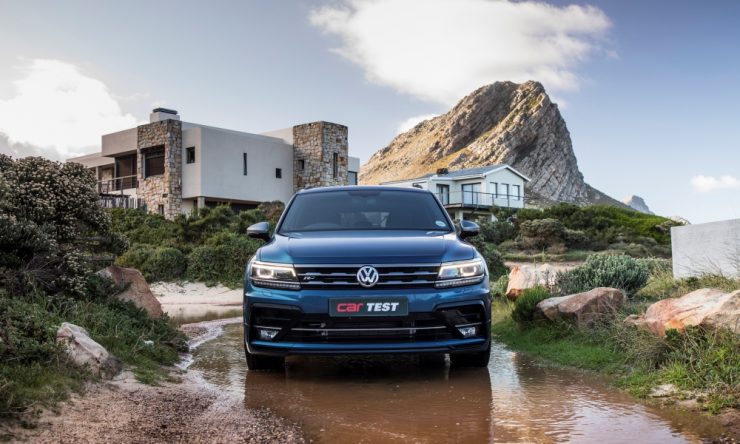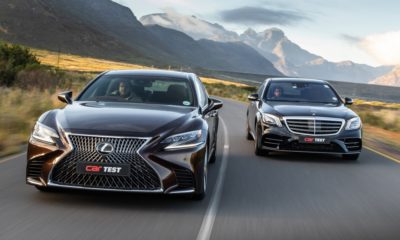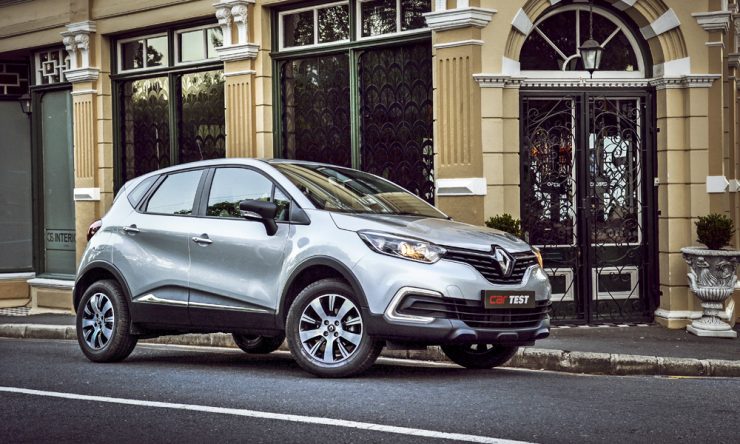CAR REVIEW: Volkswagen Golf 1,0 TSI Comfortline
The revised entry-level Golf now gets a three-cylinder engine. Is it up to the job?
Volkswagen’s Golf and the Apple iPhone. Two divergent products that share a similar goal. It’s a reference we’ve made previously but, given that both are currently midway through their seventh-generation life cycles, the likeness between VW’s bread-and-butter range and Apple’s cash cow are worth a revisit.
For both companies, the strategy to evolve rather than alter their top sellers has, given sales figures, been a very successful one. In the case of the recent Golf 7 facelift, evolutionary updates include lightly revised bumpers, front and rear, as well as a modified headlamp design. Standard throughout the new range is LED taillamps, while all models can be fitted (either standard or optionally) with full LED headlamps.
While the relatively conservative yet impressively well-built interior remains largely unchanged, the big news is a timely upgrade of all three available infotainment systems. Our test unit features the optional (on Trendline and Comfortline) Composition Media unit that adds R4 450 to the final price. We did visit a few local dealerships to inspect the base-level Composition Colour unit, but all orders placed thus far have included the upgrade.
You can see why, too, with its neatly integrated eight-inch glass-front display, user-friendly touchscreen layout and comprehensive bouquet of technologies (including Apple CarPlay), adding a welcome level of sophistication to the people’s VW. If there is a criticism levelled at nearly all of these types of glass-surfaced touchscreen systems, it’s that they are as prone to reflecting harsh sunlight, as they are adept at gathering fingerprints. Also available on the revised Golf range is the configurable Active Info Display digital instrument cluster introduced in the likes of the Passat and Tiguan. With interior dimensions unaltered, the newest version of the Golf’s interior remains the benchmark in terms of space management and comfort.
Finished in thickly woven cloth, there are welcome levels of adjustment (including height) offered on the driver’s seat, while rear leg- and headroom are bettered only by the Opel Astra. Compensation for this fact is found in the form of rear air vents linked with the Comfortline’s (manually operated) air-conditioning system. One option worth considering in modern driving environments is park-distance control (R4 750).
Where Apple and VW differ – at least here in South Africa – is that the Golf 7S arrives with a discounted pricing strategy. It’s effectively cheaper than the line-up it replaces and the two new three-cylinder 1,0 TSI-powered models in either Trendline or Comfortline specification will cost you less than the entry-level Golf 1,2 TSI Trendline they replace.
However, before assuming that a decrease in pricing corresponds with the decrease in engine capacity, it’s worth noting that the new 999 cm3 unit, with its turbocharging and direct petrol injection, not only produces some 25 N.m more than the outgoing 1,2-litre plant, but offers the same amount of torque as the 1,4 TSI unit offered further up the price list. With this 200 N.m of torque spread somewhat thinner than in the 1,4-litre (between 2 000 and 3 500 r/min, as opposed to 1 400 and 4 000 r/min in the larger unit), keeping this engine on the boil requires a more considered approach.
Thankfully, it’s a task made easy via the slick workings of the standard six-speed manual transmission. While we’re usually the first to advocate the mating of small-capacity engines with an intuitive automatic transmission, the welcome inclusion of a lightweight clutch-pedal action, together with a precise shift pattern, is a boon in this particular application.
This model’s tested performance figures further validate this drivetrain combination’s credentials compared with both the derivative it replaces and the (admittedly heavier) 1,4 TSI DSG. A recorded 0-100 km/h sprint time of 10,23 seconds fractionally betters the figure we achieved in the self-shifting 1,4-litre tested last year. Combine this with a fuel-run figure of 5,8 L/100 km in the new TSI, compared with 6,30 L/100 km in the larger-capacity model, and the relative gruffness at idle associated with the new three-cylinder entry-level Golf seems more than acceptable.
Not that you’d notice any small-capacity-engine quirks once on the move, such is the level of overall refinement and perceived build quality associated with the car VW currently sells at a rate of one every 40 seconds around the world. As with the 1,2-litre Trendline model they replace, both 1,0-litre models make do with a torsion-beam rear-suspension setup, where more powerful derivatives (including GTI and forthcoming GTD) gain a fully independent arrangement.
While there are numerous performance-related advantages associated with the latter’s more modern configuration, in the entry-level Golf, combined with cushioned 205/55 R16 tyres, the older technology performs admirably in offering a suitably compliant ride with sufficient cornering prowess to uphold the family reputation.
Another highlight of the modern Golf package is its well-weighted electrically assisted steering setup. While not delivering much in the way of feedback, it is nonetheless progressively geared to best convey confidence around the straight-ahead position and precision once turned.
-
TEST SUMMARY
Earlier this year, Volkswagen brand boss Herbert Diess was quoted as saying the trend of downsizing internal-combustion engines had achieved its goals in terms of lowering emissions, but had now reached the limits of its effectiveness. In other words, the 1,0 TSI engine featured in the revised Golf range is the pinnacle of what can be achieved by Volkswagen AG in terms of force-fed small-capacity units aimed at maximum efficiency with favourable performance.
While there’s little doubt the lightweight nature of the current MQB-based Golf range flatters the 1,0 TSI’s performance, this refined three-cylinder engine is impressive in its capabilities. Added to that, despite the congestion-driven modern trend towards automatic transmissions, it’s clear there is still relative value to be found in opting for a manual transmission.
Like the Apple iPhone, those same incremental changes between updates that add evolutionary appeal also allow those with slightly older models the option to skip updates. Similarly, while the revised infotainment systems in the facelifted Golf range certainly add convenience and sophistication (along with the 1,0-litre TSI and its fuel consumption benefits), there is still undeniable appeal in the range’s more familiar offerings, most notably the brilliant 1,4 TSI mated with the polished DSG transmission. If your budget could extend by another R52k, this would be our sweet spot in the Golf range.
However, at this 1,0 TSI Comfortline’s price point, there are a number of very competent options available for those shopping in this segment. But, VW needn’t be too worried. While the Opel Astra remains the Golf’s closest rival in terms of overall refinement with a leaning towards superior value for money, it’s the effortless proficiency with which the car from Wolfsburg ticks all the boxes that continues to impress.
*From the July 2017 issue of CAR magazine

